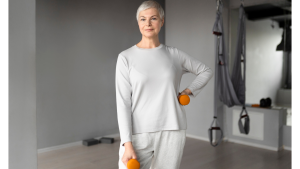How Squats Impact Posture

Strengthening Core and Lower Body Muscles.
Improving posture involves more than just squats. It’s a holistic process that encompasses various exercises and lifestyle adjustments. Here’s more on what contributes to good posture and how it extends beyond squats for seniors:
Comparison tabular
Wrapping up

Hey there, it’s Mike Rrsq, the Editor-in-Chief over at Jsquat.com, and I’m absolutely obsessed with all things squat fitness! I’ve been lucky enough to get some serious recognition for my work in this field. With a solid background in the fitness and wellness industry, I’ve been there right from the get-go, helping shape this website into what it is today.
You see, I’m not just the boss around here; I’m also a passionate contributor. I love sharing my insights through my articles, and trust me, they’re not your run-of-the-mill stuff. Each piece I write is a labor of love, filled with my expertise and real-world experience in the fitness universe. So, if you’re into fitness and looking for some inspiration, you’re in the right place!
